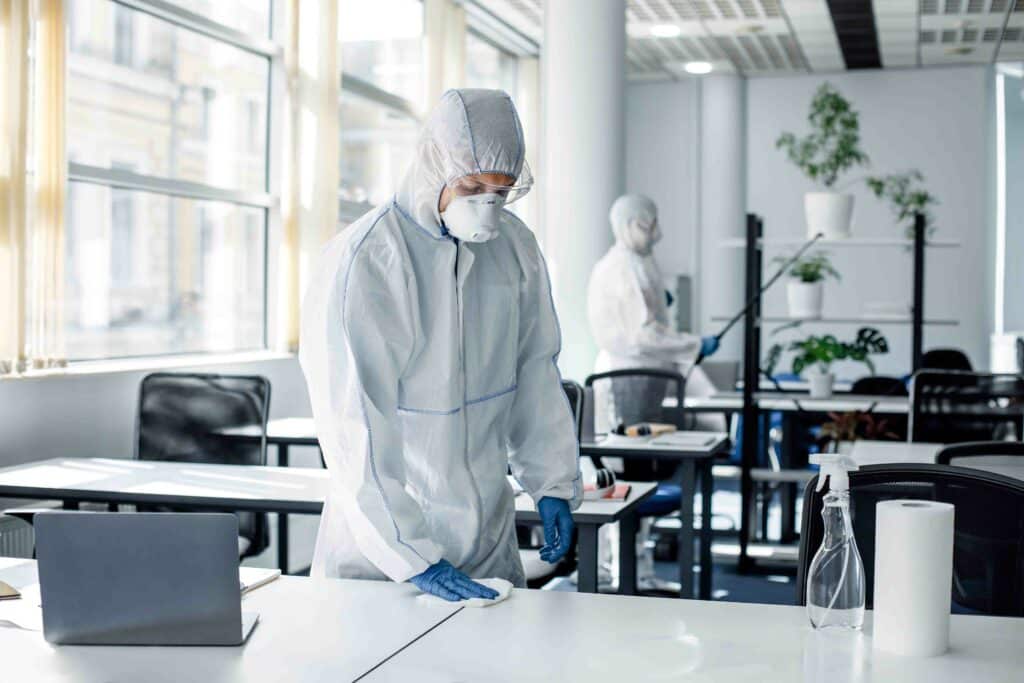
Several months ago, the United States Centers for Disease Control and Prevention (CDC) revised its guidelines for cleaning and disinfecting against COVID-19. Although informative, many national media outlets left out the details of the recommendations, cutting the bulk of the report in favor of quick headlines. This report was also premature as our nation is still being held hostage by COVID-19 and its emerging variants. At this point, it is not only essential to clarify the importance of proper cleaning, disinfecting, and sanitizing protocols, but critical that businesses continue their vigilance and maintain cleaning protocols adopted during the height of the pandemic. The main takeaway is that best practices learned over the past year should not be disregarded and placed upon the proverbial shelf.
During the pandemic, proper protocols kept businesses open, kept employees and customers safer, and provided the peace of mind needed to continue operations. Today, companies across the nation must continue to review their commercial cleaning protocols and find what works for their level of customer interaction without immediately reverting to the minimalism of pre-COVID cleaning procedures. Patrons are constantly reminded of the spread of COVID and its variants and will undoubtedly continue to take notice of cleaning regimens from the businesses they patronize.
The CDC states, “Cleaning with products containing soap or detergent reduces germs on surfaces by removing contaminants and may also weaken or damage some of the virus particles, which decreases the risk of infection from surfaces.” The CDC is correct, but businesses should continue industry-leading best practices such as cleaning more frequently and disinfecting communal areas, especially if high transmissions of COVID-19 occur within the communities they serve.
Another statement by the CDC involves the use of fogging, fumigating, and wide-area electrostatic spraying, in which they assert that these practices are not recommended as a primary method of surface disinfection. Again, we agree, but we must clarify: Industry-leading best practices suggest that the level of disinfecting required must be determined based on the type of business. When used as part of a comprehensive cleaning regimen, electrostatic sprayers can be highly effective for high-traffic consumer facilities, especially since there is no way of knowing which patrons are vaccinated and which ones are not.
We agree with the CDC’s guidance and recognize the agency’s continued efforts in the fight against COVID. However, we encourage all businesses to read through CDC recommendations thoroughly, not relying solely on short-and-sweet partial reports found in the media, when making decisions on the best and most effective cleaning and disinfection regimen for their facilities.
Our professional experience shows that continued disinfecting, when implemented with a comprehensive cleaning regimen and other social guidelines, can play a role in significantly reducing the risk of infection spread. Businesses that maintain proper cleaning protocols provide employees and customers greater peace of mind and demonstrate a public responsibility toward prioritizing health and safety.